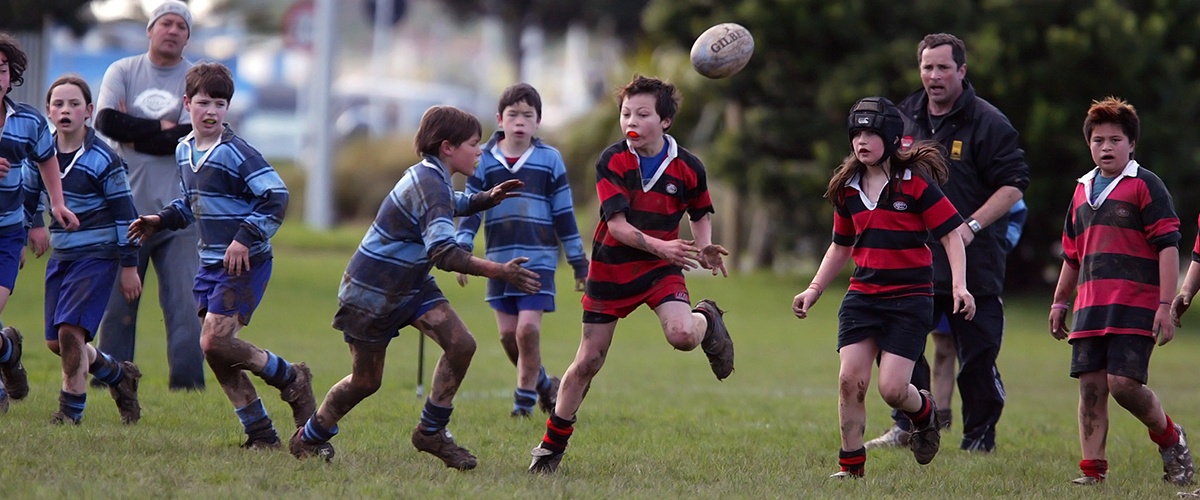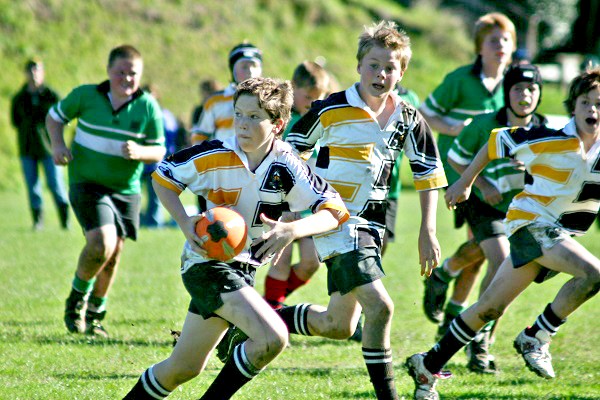- Rugby Toolbox
- Resources & Education
- Learn more
- Articles
- Snook on Coaching
- Under 11/13 – Support Play
- Ruck & Run Drill
- Playing Philosophy – Ruck & Run Coaching Components
- Playing Philosophy – Spread the Forwards
- Playing Philosophy – A forward behind the ruck
- Playing Philosophy – Ruck & Run
- Playing Philosophy – An idea!
- The Breakdown
- Building Positivity [3]
- Building Positivity [2]
- Building Positivity
- Fitness and Game Related Activities
- Getting the Head Working
- Missiles are Dangerous
- Use of Video
- Winger Attacking Outside First-Five
- Player Profiling
- Selection
- Fitness Away from the Team Session
- Playing Philosophy (Pre season Prep)
- Coaching the Coaches
- The Rugby Coordinator and Pre-Season Preparation
- Why Not Use Tap Penalties More Often?
- Why Kick the Ball Down the Middle of the Field?
- Defending the 5 Metre Lineout Drive
- Scoring from the 5 Metre Lineout
- What are the Kicking Team Aiming to Achieve from Halfway Restart
- Should We Practice Scoring Tries?
- Team Culture
- Looking After Your Players
- Coach Survival Tips
- Under 11/13 – Backline Defence
- Under 11/13 – Ruck Defence
- Under 11/13 – Back Attack
- Under 13 – The Counter Attack
- Under 11/13 – The Maul
- Under 11/13 – Lineouts
- Under 11/13 – Decision Making
- Under 11/13 – Support Play
- Under 11/13 – Dive Pass and More
- Under 11/13 – Drop & Grubber Kick /Highball Catch
- Under 11/13 – Front on Tackling
- Under 11/13 – Contact – Getting Up – The Ruck
- Under 11/13 – The Coaching Session
- Under 8/10 – Using Space
- Under 8/10 – Kicking
- Under 8/10 – Contact and Picking Up the Ball
- U8/U10 Draw & Pass and Sidestep
- Under 8/10 – The Tackle
- Under 8/10 – The Coaching Session
- Under 7 – Test Your Coaching – Support Play
- Tap Pass and Swerve U7
- Ball Familiarisation; Passing & Receiving
- Activities for the Non-Contact Tackle
- Under 7 – The Coaching Session
- Coaching Teenagers – After the Ruck
- Coaching Teenagers – The Practice Session
- Coaching Teenagers – Best Practice
- Coaching Kids – Best Practice
- Plays from a Tap Penalty
- Running Plays from a 5 Man Lineout
- Driving Plays from a 5 Man Lineout
- Strike Plays at the End of the Lineout
- Back Strike Plays at the Lineout
- Wide Strike at the Scrum (2)
- Wide Strike at the Scrum
- Midfield Attack at the Scrum
- No 8 Plays at the Scrum (2)
- No 8 Plays at the Scrum
- The Cut Out Pass
- Skills to Penetrate (2)
- Skills to Penetrate
- Movements to Penetrate
- Patterns to Penetrate
- Contact and Continuity
- Keeping the Ball Alive Out Wide
- Pre Season Support Activities
- Checklist
- Understanding the game
- The Playing Philosophy
- The Lineout
- Overview
- Team Profile
- Start Now!
- Backrow
- Nine and Ten
- Rugby-related Fitness Activities
- The Psychological Edge
- Open Field Play
- Key Performance Indicators
- Improving Team Performance
- Backline Attack Concepts
- Tactics at Phase Play
- Playing Philosophy
- The ‘Stop Focus’
- Kick Attack
- Clearing the 22
- Wide Attack at Phase
- Player Focus
- Scrum Preparation
- Lineout Preparation
- Back Attack Preparation
- Sevens Preparation
- Sevens Kick Offs
- Sevens Scrum and Lineout
- Sevens Attack Patterns
- Sevens Defence
- 7's Selection and Game Planning
- Coaching and Leadership
- How the Game Evolves
- Changing Within the Game
- Learning from the Television.
- Using Tap Penalties Wisely
- Defence Drills
- Defence Drills for Tight Five
- Team Defence and TUB’ing
- Establishing Patterns from the Ruck
- Structured Phase Play
- Structuring Phase Play on the Run
- Coaching Roles
- Structuring a Close in Tackling/Defensive Session
- Coaching in Threes
- Attacking Back Play
- Kick Off Chase
- Wrap Around Back Plays
- Lineout Plans
- Looking and Learning
- Motivating Your Players
- Scrum Attack
- Refocusing the Team
- Monitoring the Progress
- Learning the Game
- Playing to the Laws
- Small is OK
- Decisions After the Tackle
- Improving Your Coaching
- Food for Thought
- More Food for Thought
- Passing & Catching
- How Ireland Nearly Beat the All Blacks
- The Progressive Coach
- Try Something New
- Encouraging Excitement
- The Mental Approach
- Where to Start
- Being the Best You Can Be
- Off the Ball Decisions
- Lineouts Difficult to Master
- Decisions on the Run
- Rucking and Rolling
- A Successful Approach
- Gaining Clarity
- Manipulation vs Physicality
- Beating the Drift
- To Ruck or Not to Ruck
- Stopping the Lineout Drive
- Fine Tuning the Planning
- It's a Running Game
- RugbySmart 2015
- Using the Shoulders
- Loosehead Prop / Tighthead Prop
- Position Specific – Hooker
- Position Specific – Lock
- Position Specific – Blindside Flanker
- Position Specific – Openside Flanker
- Position Specific – No 8
- Position Specific – Halfback
- Position Specific – First Five Eighth
- Position Specific – Second Five Eighth
- Position Specific – Centre Three-quarter
- Position Specific – Wing
- Position Specific – Fullback
Under 11/13 – Support Play

Support play is the most common role in the game. It is important for each player to work hard to get in to a good position to be able to continue the play when they are not in possession of the ball.
This is the aspect of the game that creates continuity by providing options for the ball carrier and carrying out the best option once the ball carrier has made their decision. It may be receiving a pass and running or passing or going in to contact to help retain the ball.
At this level, it is important that players are taught to run in support in the first instance. The passing and receiving option is the start point.
Key Factors
- The support player quickly runs in to a position that will provide a passing option for the ball carrier.
- They must have depth on the ball carrier meaning they are a minimum of a metre away on the inside or behind.
- Depth provides ‘time & space’ in which to make a good decision.
- Staying inside means they will ‘hold’ a defender and can clean out if the ball carrier is tackled; can take a short pass on the inside; or can wrap around the ball carrier in to the space on the ball carrier’s outside.
- Staying behind gives the support player all the options based on what is seen when looking at the opposition.
- The support playing must be looking at the opposition as well as the team mate so that they make a good decision based on what is seen in front of them.
- Communicating to the ball carrier is important so that the two players can make a joint decision that is likely to be successful.
ACTIVITIES
1-2 V 1
8 metre square grid.
The second attacker is the support player and must trail behind the ball carrier.
The ball carrier attacks the defender and must threaten so that the defender feels compelled to make the tackle. (Two handed touch or whatever)
Once the defender is committed the support player accelerates in to the space that has been spotted and calls for the pass.
Set up several grids in a sequence so that there is a continuation of 2 v 1’s in action running through six grids. The support player will change each time.
Make sure the support player has depth and is looking.
The defender can sometimes wait and go for the support player to check that the ball carrier is carrying out the best possible threatening of the defender.
It is important that the ball carrier doesn’t just run and pass. Before the pass they should practice a goose step or a quick movement of the ball up and down in two hands, anything that will distract the defender and hold their attention. The one thing they can practice is looking directly in to the eyes of the defender so that they have their attention.
2- 3 V 2
Bigger grid. Support player trails behind and when the opportunity arises accelerates in to the space and calls for the ball.
If the defenders are crafty they will hold back and wait until the support player reacts.
It can be an idea early in the drill to ensure the defenders mark the two front runners.
3- 6 v 4 / 7 v 5 / 8 v 6...
Depending on the numbers have an appropriate sized grid in which to play.
6 V 4 needs about a quarter of a rugby field.
The attackers start on the halfway with the defence at least 7 metres away.
The attack line must keep changing their shape so that sometimes they are wide apart, sometimes close, sometimes a couple are close and the rest are wide.
The idea is for the front line (4 V 4) to threaten and force a gap and as they force a gap a support player from behind will hit the space they have left, calling for the ball and accelerating forward.
The second support player should take off to now become the first support player on the new ball carrier.
The play should continue with interpassing until a try is scored. Tackling may well be a two-handed touch. If you do have tackling, then it is a good time to introduce the clean out and the pop pass in the tackle.
If a try is scored the attacking team keeps the ball and turns and attacks in the opposite direction.
If a try is not scored then the 4 defenders plus 2 become the attackers.
4- Chase Support
This is a good drill to encourage the support players to head towards the ball carrier to receive the pass, something that is often not understood.
Groups of 4/5 start with a ball on the intersection of the tryline and 5 metre line.
Cones are placed at every 8/ 10 metres along the side-line up to the far 10 metre line
Cones are placed along the 5 metre line in between the cones on the tryline.
The first ball carrier runs forward a few paces on the 5m line (in from the side-line) and then accelerates towards the first cone on the side-line.
The second runner runs along the 5m line until getting to the first cone then changes direction and heads towards the first runner to receive an inside pass going at full steam towards the next cone on the side-line. They get in to balance as they arrive at the cone looking for the third runner to arrive on the inside shoulder for a pass.
This continues in the same fashion until the last cone is reached.
Once a pass is made the player sprints back to the 5m line and joins the back of the support runners.